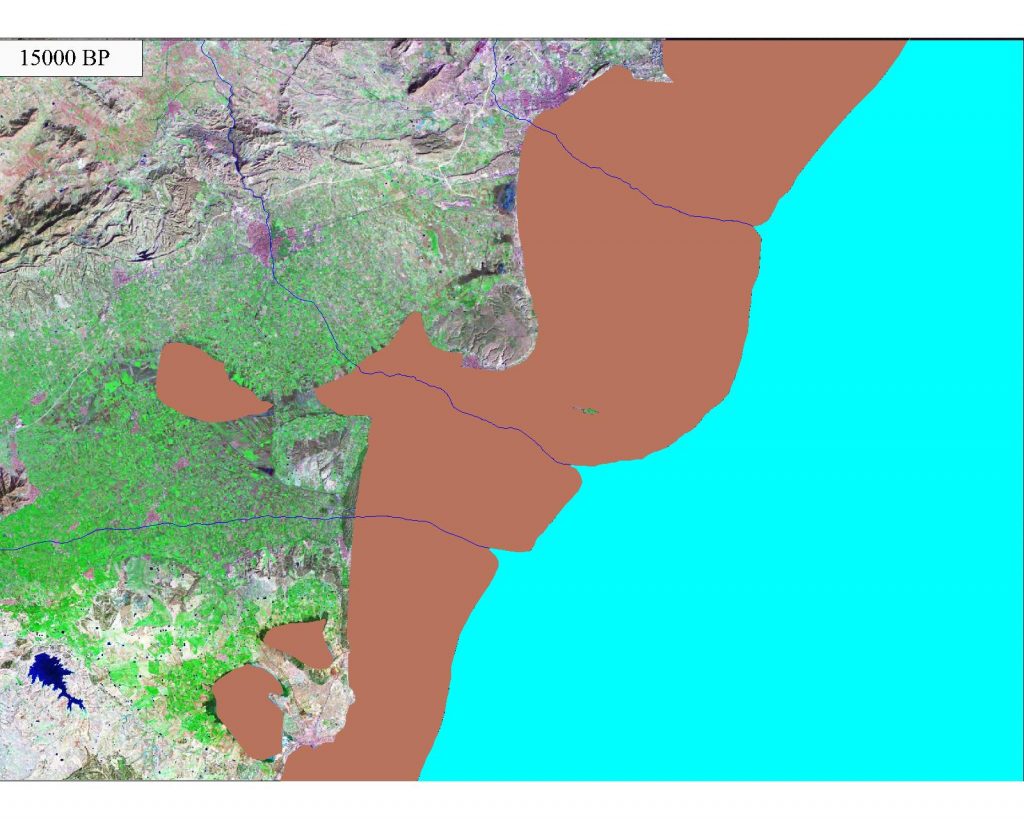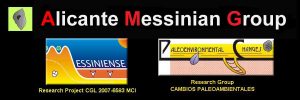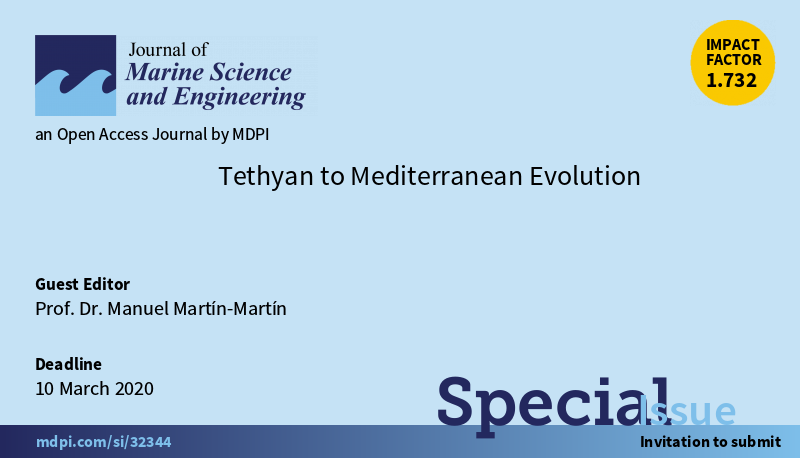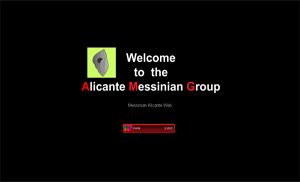Home » Sin categoría
Category Archives: Sin categoría
marine geophysics on board a ship
Last February 15th, 2023, students in the third year of the Geology Degree of the course “Geophysics and geophysical prospecting”, under the supervision of Professor José Enrique Tent Manclús, carried out practices aboard the “Rosa de Abril” boat from the Alicante harbor. The practice was show a Boomer High resolution reflexion equipment and a ROV. The picture show a student trying to understand the ROV commands.

The development of the sinus illicitanus (I)
The change of the coastline in the southern part of the province of Alicante for the last 15,000 years have been modeled and described in the work of Tent-Manclus (2013). It is obtained by integrating data from different sources and especially high-resolution seismic profiles of the nearby marine continental shelf. Ten periods have been distinguished in the evolution of the Bajo Segura coastline : 1) 15000 BP- 14600 BP: rapid rise; 2) 14600 BP to 13500 BP: the Older Dryas, slow rise; 3) 13500 BP to 12700 BP: stability and descent; 4) 12700 BP to 11700 BP: the Younger Dryas, descent of the sea level; 5) 11700 BP to 11300 BP: very fast rise; 6) 11300 BP a 8500 BP: rapid rise; 7) 8500 BP = 6500 AC to 8200 BP = 6200 AC: 8.2 ka event stabilization; 8) 6,200 BC to 4,000 BC: rise, Tabarca Island is form; 9) 4000 BC to 3000 BC: the slow rise due to subsidence sinus ilicitanus forms and 10) 3000 BC to the present day 2000 AD: the sinus ilicitanus desiccates.

Maps at different times are show selected from the 164 maps that have been made. This is a first version of how the coastline evolves in the region. This work It can be a starting point to improve knowledge of the historical landscape evolution..

The sinus ilicitanus dries until today, the rest of which are the lagoons of the Fondo and Santa Polo Salinas.
Cite as: Tent-Manclús, J. E. (2013): Cambios de la línea de costa en el Bajo Segura (S de Alicante) en los últimos 15.000 años. Estudios geográficos, 74 (275): 684-702. Doi: 10.3989/estgeogr.201324
Marine Geology field trip to Nijar and Sorbas
As the last year, students of the third course of Marine sciences of the Alicante University visit the Sorbas basin, Cabo de Gata, Hoyazo de Nijar, and Cerro del Espíritu Santo of Vera. The visit took place on 7 and 8 of November of 2019.
The visit was organized by Antonio Estévez, Santiago Moliner, and José Enrique Tent-Manclús.

Student group before entering the Sorbas Cave.
Alicante Messinian Group LOGO

The logo was made by Jesús M. Soria based in an eroded mediterranean margin resembling the M of Messinian.
The “Paleoenviromental changes” logo is for the Research Group of the Alicante University.
The Alicante Messinian Group was granted by the Ministerio de Ciencia e Innovación Research Project CGL 2007 -6583 .
Villafranqueza corals in the 34th IAS Meeting of Sedimentology (Rome)
Entobia is a well-known ichnofacies typical for nearshore environments, differentiated from the Gnatichnus ichnofacies as being related to more stable conditions in high-energy settings and longer times of exposure of the bottoms. Surroundings of the city of Alicante (Villafranqueza section, SE Spain), boring structures related to the Entobia ichnofacies were observed on an Eocene rockground colonized after a Miocene marine ingression. Reefrelated facies are present as coral colonies developed after the transgression and show evidence of bioerosive activity. The relationship existing between the growing coral colony and boring organisms is addressed in order to elucidate ecological interactions and palaeoenvironmental conditions. The studied section is characterized by a very evident angular unconformity dividing the underlying Eocene sandy turbiditic beds from the overlying Miocene coastal limestones. The Entobia ichnofacies is developed on a variety of substrates, represented by the Eocene rockground, resedimented lithoclasts, different bioclasts (mainly thick shelled bivalves and gastropods) and coral bioconstructions. Boring structures are mainly represented by Gastrochaenolites, Entobia (usually preserved as internal mould) and, more rarely, Trypanites. Differences in the relative abundance of the three ichnotaxa were observed according to the substrate: i) on the rockground, Gastrochaenolites and Trypanites are the most abundant ichnotaxa, being Gastrochaenolites represented by different ichnospecies; ii) the three ichnotaxa are present in litho- and bio-clasts; iii) in corals, almost exclusively Gastrochaenolites torpedo is found. On the rockground, deep penetrating borings as Gastrochaenolites are differently preserved, being present complete forms together with partially eroded ones on the same surface. This would suggest that colonization occurred over long times, due to prolonged exposure of the bottoms. Together with possible ecological restrictions, a preservation bias induced by such a prolonged exposure must be considered in order to justify the relative abundance of the deep structures typical for the Entobia ichnofacies with respect to the shallow-tiered ones. Where Gastrochaenolites is associated to corals, bivalves were found inside the bioerosion structures being mainly represented by Lithophaga sp.. In this sense, a bioerosive activity specialism is detected, since Gastrochaenolites is extremely more abundant in the bioconstructions produced by the coral Tarbellastrea than in those where other types of corals are present (e.g. Porites and Siderastraea), thus suggesting some kind of ecological interplay. Moreover, the study of the geometrical and morphological relationship between Tarbellastrea and Gastrochaenolites shows that, in part of the observed specimens, the coral was growing all around the lithophagid borehole. This would suggest that corals and bivalves developed at the same time and that the shelly colonization and the progress of the host patch reef did not occur in different successive phases.
Cite as: Giannetti, A., Falces-Delgado, S., and Baeza-Carratalá, J. F. (2019): Interaction of boring organisms with corals. Entobia ichnofacies development in a transgressive nearshore scenario. 34th IAS International Meeting of Sedimentology, Rome 10-13 September 2019. “Sedimentology to face societal challenges on risk, resources and record of the past. Sesion 8.A-660.

The Villafranqueza unconformity in the logo of the Alicante University Departament of Earth Science and Environment.
Tethyan to Mediterranean Evolution
Message from the Guest Editor
Dear Colleagues,
Several geological modeling studies on the geodynamic and paleogeographic Alpine (Eo-Alpine during the Cretaceous–Paleogene; Neo-Alpine during the Oligocene– Miocene) evolution of the Mediterranean have been published without consensus in the last four decades. Therefore, a Special Issue dedicated to “Tethayan to Mediterranean evolution” seems justified. Studies that consider the geodynamic and/or paleogeographic evolution of the entire Mediterranean area or a part of this area will be welcome. The proposal can be focused on stratigraphic, sedimentological, petrographic, or tectonic data, or geophysical interpretations and reconstructions based on principles of Plate Tectonics using GPlates or similar software. The papers that are published in this Special Issue can contribute to clarifying and updating the state of our knowledge about this controversial theme.

Message from the Editorial Board
T h e Journal of Marine Science and Engineering (JMSE; ISSN 2077-1312) is an international peer-reviewed open access journal which provides an advanced forum for studies related to marine science and engineering. The journal aims to provide scholarly research on a range of topics, including ocean engineering, chemical oceanography, physical oceanography, marine biology and marine geosciences. We invite you to publish in our journal sharing your important research findings with the global ocean community.
Open Access: free for readers, with article processing charges (APC) paid by authors or their institutions.
High visibility: Indexed in the Science Citation Index Expanded in Web of Science, in Inspec (IET) and in Scopus.
CiteScore (2018 Scopus data): 1.76, which equals rank 30/92 in ‘Ocean Engineering’, rank 105/288 in ‘Civil and Structural Engineering’ and rank 77/203 in ‘Water Science and Technology’.
Guest Editor:
Prof. Dr. Manuel Martín-Martín
Earth sciences and environment
Department (University of Alicante). Campus Universitario del San Vicente del Raspeig, AP- 99, 03080 Alicante, Spain
manuel.martin.m3@gmail.com
Deadline for manuscript submissions:
10 March 2020
Alicante Messinian Group
This blog is the continuation of the web page of the Alicante Messinian Group.
www.messinianalicante.com


Recent Comments